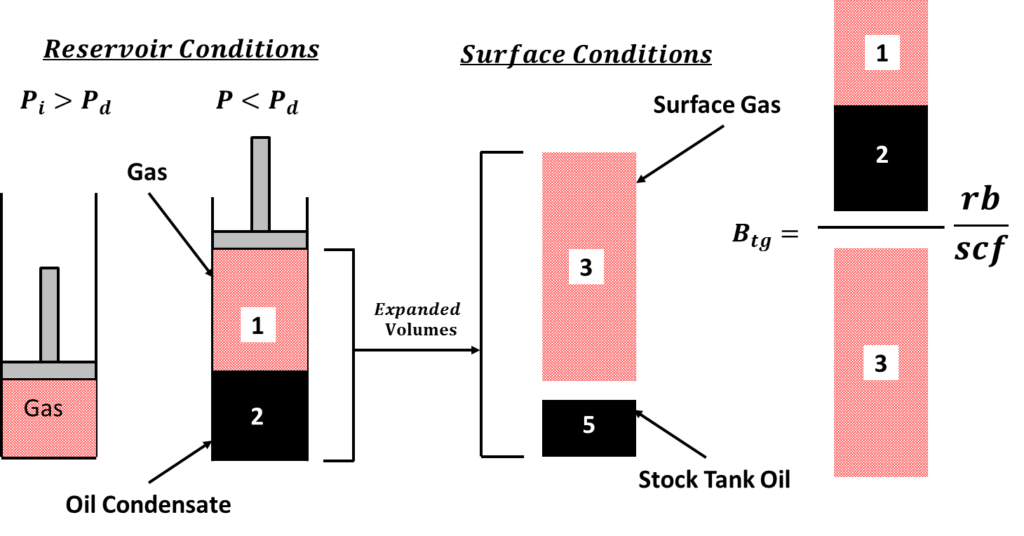So far we have considered reservoir pressures maintained above the dew point. At reservoir pressures above the dew point, only single phase gas exists. At pressures below the dew point, condensate evolves out of the gas becoming oil condensate in the reservoir. When this occurs, gas and oil coexist in the reservoir. Under these circumstances, a two phase gas formation volume factor is applied to account for the gas and oil phases. An illustration of the two phase gas formation volume factor is shown below:

From the figure above, the reservoir initially contains gas. As the reservoir pressure falls below the dew point, oil condensate drops out in the reservoir. Once, the reservoir pressure falls below the dew point of the gas, the two phase gas formation volume factor can be defined. From the figure above it should be clear that the two phase gas formation volume factor (![]() ) is the total volume at reservoir conditions (gas phase + condensate phase) divided by its resulting surface gas phase. It has units of STB/scf. It is important to realize that the two phase gas formation volume factor assumes the overall composition to be equal to the initial free gas composition. Thus if no gas initally exists in the reservoir, e.g. an undersaturated oil reservoir, then
) is the total volume at reservoir conditions (gas phase + condensate phase) divided by its resulting surface gas phase. It has units of STB/scf. It is important to realize that the two phase gas formation volume factor assumes the overall composition to be equal to the initial free gas composition. Thus if no gas initally exists in the reservoir, e.g. an undersaturated oil reservoir, then ![]() is undefined and neglected from material balance calculations.
is undefined and neglected from material balance calculations.
We have touched all the terminology we need to proceed with material balance derivations. If one understands when these properties are applied and can keep track of units, material balance becomes a breeze.